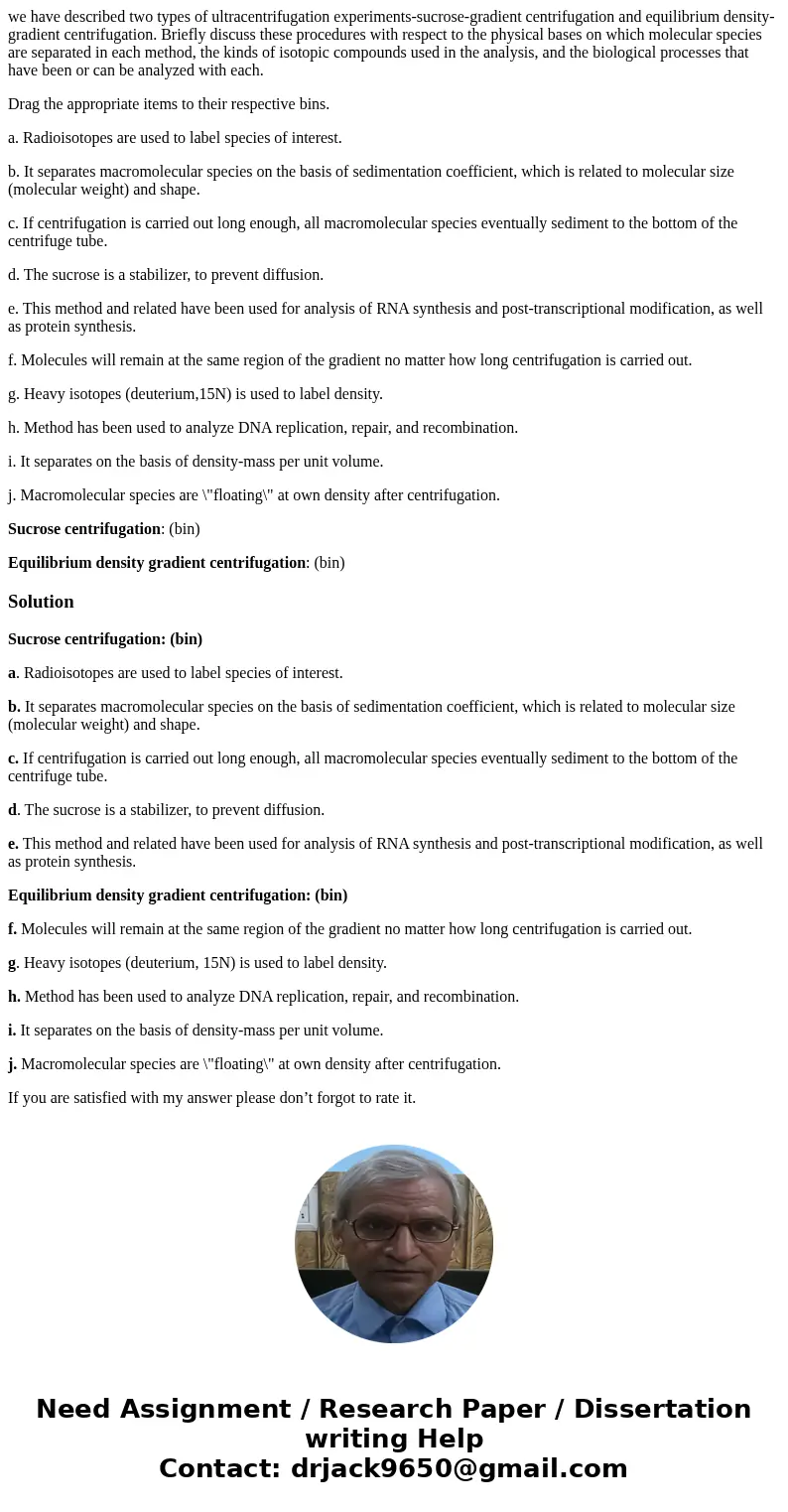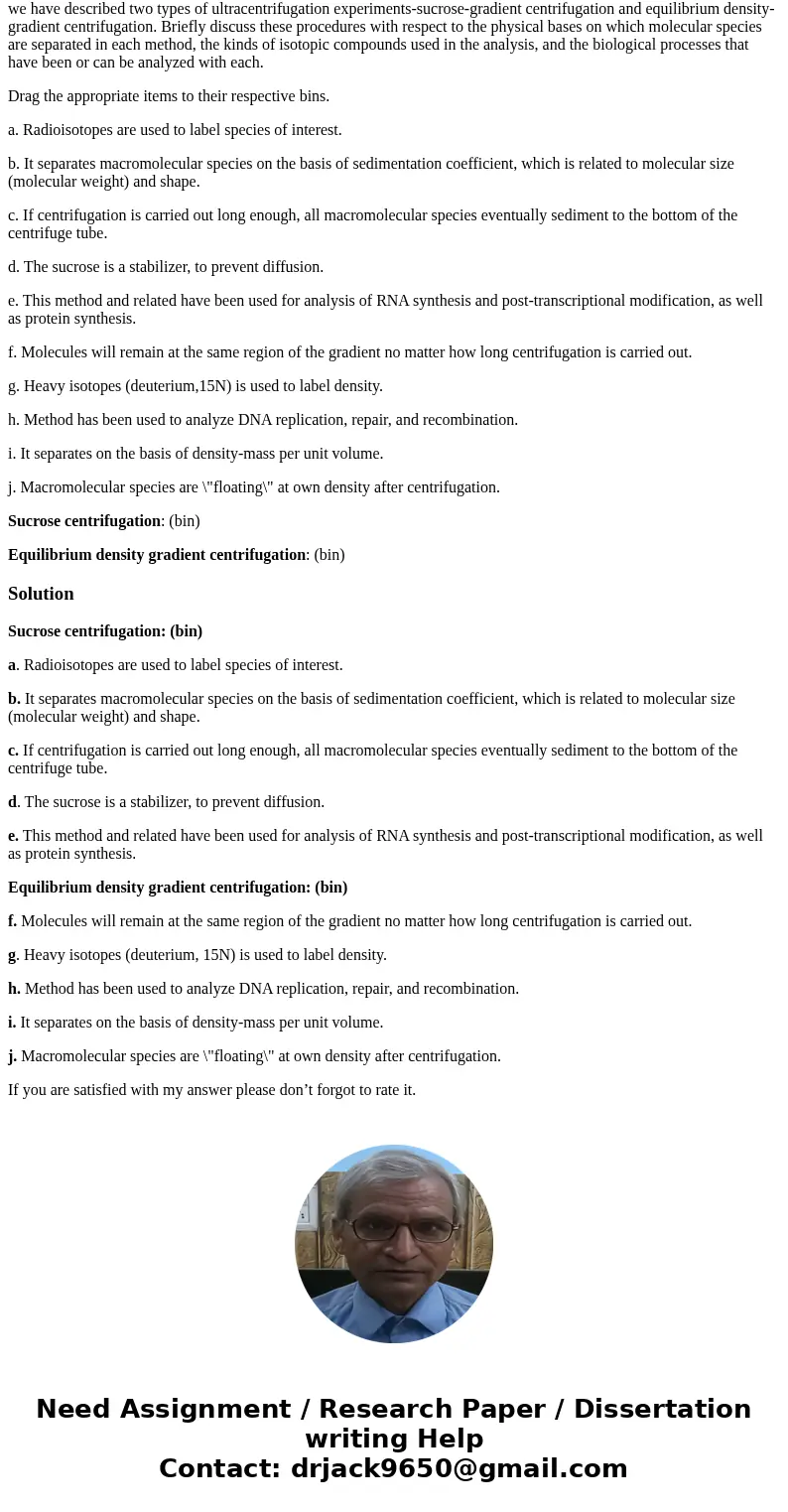we have described two types of ultracentrifugation experimen
we have described two types of ultracentrifugation experiments-sucrose-gradient centrifugation and equilibrium density-gradient centrifugation. Briefly discuss these procedures with respect to the physical bases on which molecular species are separated in each method, the kinds of isotopic compounds used in the analysis, and the biological processes that have been or can be analyzed with each.
Drag the appropriate items to their respective bins.
a. Radioisotopes are used to label species of interest.
b. It separates macromolecular species on the basis of sedimentation coefficient, which is related to molecular size (molecular weight) and shape.
c. If centrifugation is carried out long enough, all macromolecular species eventually sediment to the bottom of the centrifuge tube.
d. The sucrose is a stabilizer, to prevent diffusion.
e. This method and related have been used for analysis of RNA synthesis and post-transcriptional modification, as well as protein synthesis.
f. Molecules will remain at the same region of the gradient no matter how long centrifugation is carried out.
g. Heavy isotopes (deuterium,15N) is used to label density.
h. Method has been used to analyze DNA replication, repair, and recombination.
i. It separates on the basis of density-mass per unit volume.
j. Macromolecular species are \"floating\" at own density after centrifugation.
Sucrose centrifugation: (bin)
Equilibrium density gradient centrifugation: (bin)
Solution
Sucrose centrifugation: (bin)
a. Radioisotopes are used to label species of interest.
b. It separates macromolecular species on the basis of sedimentation coefficient, which is related to molecular size (molecular weight) and shape.
c. If centrifugation is carried out long enough, all macromolecular species eventually sediment to the bottom of the centrifuge tube.
d. The sucrose is a stabilizer, to prevent diffusion.
e. This method and related have been used for analysis of RNA synthesis and post-transcriptional modification, as well as protein synthesis.
Equilibrium density gradient centrifugation: (bin)
f. Molecules will remain at the same region of the gradient no matter how long centrifugation is carried out.
g. Heavy isotopes (deuterium, 15N) is used to label density.
h. Method has been used to analyze DNA replication, repair, and recombination.
i. It separates on the basis of density-mass per unit volume.
j. Macromolecular species are \"floating\" at own density after centrifugation.
If you are satisfied with my answer please don’t forgot to rate it.


 Homework Sourse
Homework Sourse